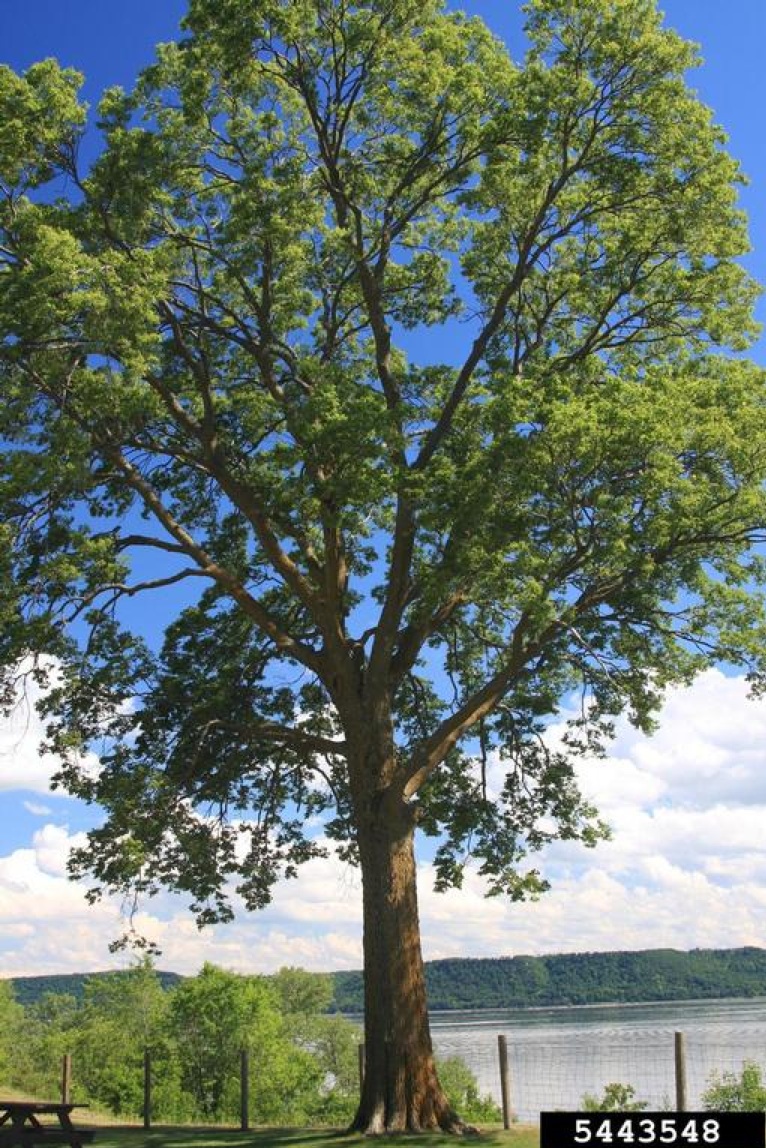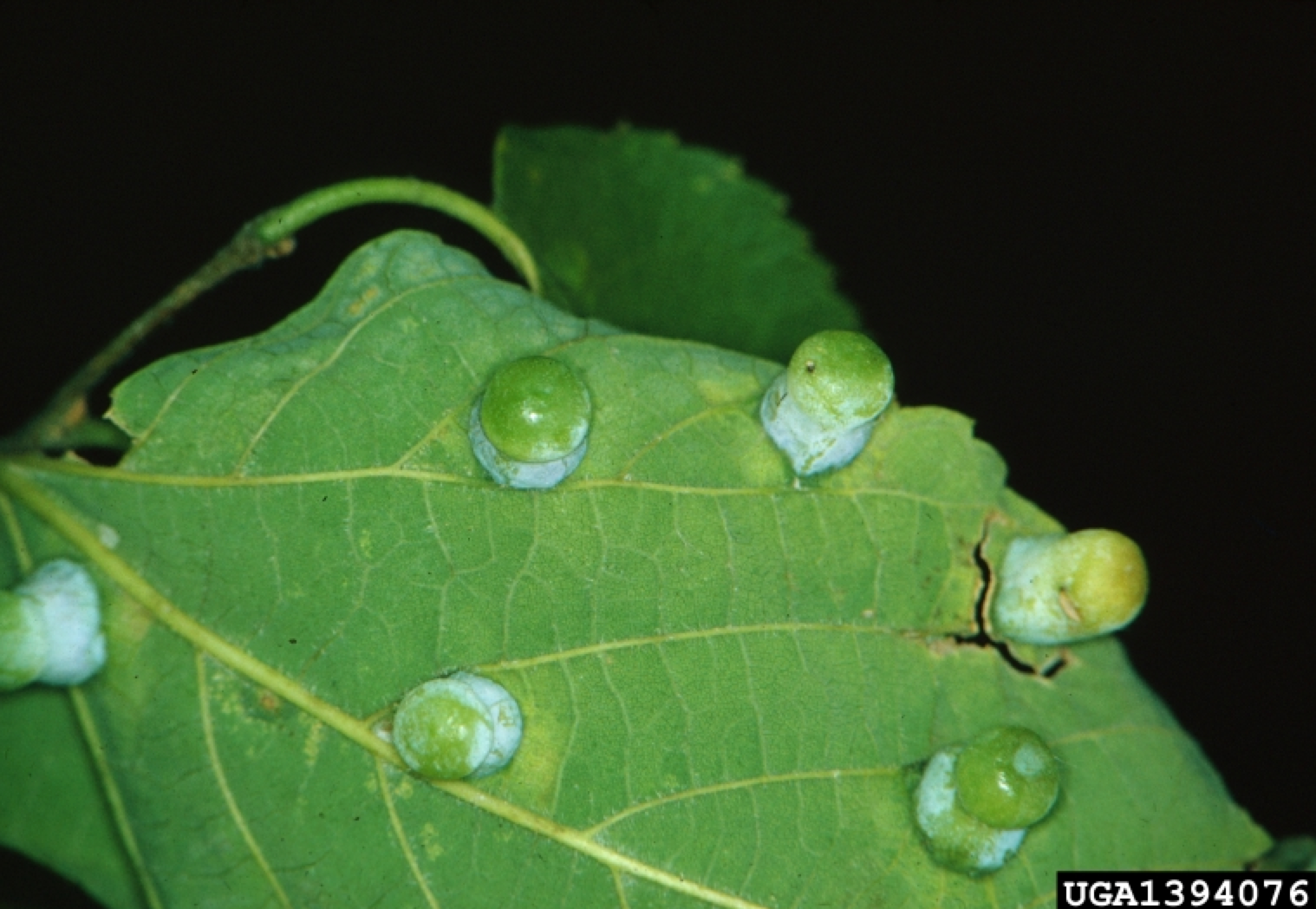August is here, which means many of our trees and shrubs will begin to move toward their fall color. When temperatures become cooler and days get shorter, Chlorophyll production slows down. Chlorophyll is what gives our trees their green color. When the chlorophyll reduces its presence, we are left with the pigments that give us yellow, orange, and red in our leaves in the fall. One tree that gives us great fall color is Hackberry.
Hackberry, Celtis occidentalis, is a native tree to the region. It grows up to 60 feet tall and has a spread of 50 feet. It is in the same family as the elm tree, Ulmaceae. It has simple, alternate leaves that are 2-5 inches long and have an uneven base to each leaf. The bark on Hackberry is described by many as "warty", which makes it easy to identify any time of the year. The fruits are small, pea-like and dark purple and they persist into the late winter months, if not snatched up by wildlife. In the fall, the leaves will turn a yellow-green to yellow-brown color for added interest.
Hackberry is commonly found on roadsides and in forested areas. It will make a great shade tree for any acreage or landscape setting. It is a very fast growing tree, which means it will drop small branches on windy days and more in storms, so plant it where the branches will not affect your day-to-day activities. Hackberry trees prefer to grow in rich, well-drained soils and full sun, but they are adaptable to a wide range of growing conditions.
Hackberry trees are relatively free from insect and disease problems. The most common insect problem they face is not detrimental to the growth of the tree, hackberry psyllid. Hackberry psyllids are very common in hackberry trees and often cause a gall to form on the underside of many of the leaves on the tree. The gall is a tiny, round ball that forms attached to the leaves, it is caused by a very small insect, a psyllid. This insect is not harmful to the tree, other than an aesthetic nuisance. Control measures are not necessary.
Hackberry trees provide a great habitat and food resource for many birds and deer and for many pollinator insects such as butterflies. According to the USDA, NRCS; the hackberry tree has been included in windbreak plantings to help control erosion. They also state that Native Americans used hackberry trees for many medicinal purposes such as for sore throats and the berries were used to add flavor to foods. Hackberry is great firewood and it is sometimes used for inexpensive furniture.
Hackberry is a great choice for a native tree to add to any landscape. It was one of the trees added to the ReTree Nebraska's 15 trees for 2015, which means it is a great choice for Nebraska. It adds great fall color and provides habitat and food to many birds, pollinators, and other mammals throughout the winter months that can be enjoyed from your home. So the next time you are looking for a great shade tree for your acreage or landscape, choose Common Hackberry.
Hackberry Tree Image to the left is Courtesy of Steven Katovich, USDA Forest Service, Bugwood.org. Hackberry Psyllid Gall Image is Courtesy of James B. Hanson, USDA Forest Service, Bugwood.org.


